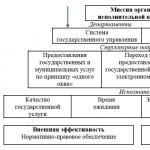For many families, the problem is that they cannot make ends meet and begin to live in debt. This happens for one reason - people live beyond their means, there are more of them than theirs. If all your earned money disappears in an unknown direction and you do not have enough money before your salary, then you need to urgently take action and choose one of the options.
- or increase income
- or reduce costs
There is no other way!
The first option, as a rule, cannot always solve this problem. As income grows, expenses also grow proportionally, new needs appear, and expenses for status and image items increase.
Striving to increase your income is, of course, necessary, but reducing your expenses and bringing them in line with your income is a guaranteed way to solve your financial problems.
The basic law of home economics is to live within your means; expenses should be less than income.
Ideally, your current expenses should not exceed 60-70% of your income, and the surplus should be regularly set aside for future goals (savings fund, investments).
How to reduce family expenses?
For almost all families, the main expenses are approximately the same - utilities, food, medicine, education, clothing, entertainment, etc.
For many of these items, spending can be significantly (and painlessly) reduced, thereby freeing up funds for...
What do we usually spend money on?
The structure of expenses of an average family is clearly presented in the picture (this is just an example of expense items, read below about the optimal share for each item).
Family budget expenses depend on the level of economic development of the country and the level of well-being of citizens.
This dependence was discovered and described in the last century by the German statistician Ernest Engel, and it was called Engel’s law. The essence of the law is that with an increase in family income, the share of expenses for food decreases, the share of expenses for clothing, housing and utilities changes little, and the share of expenses for satisfying cultural and other intangible benefits increases noticeably.
Therefore, depending on the level of income in different families, the ratio of expense items may vary.
The rich will have a significantly lower share of food expenses than the poor. But on average, the structure of expenses in most families remains approximately the same, differing only in quantitative terms.
In order to understand where you can and should save, and where you can’t, you need to:
1. Find out the structure of your expenses, determine what share each item takes up and find out what you spend the most money on. To do this, you need to keep track of your expenses for several months, record and analyze all your expenses.
2. Determine the 2-3 most expensive budget items that you can regulate yourself (usually food, clothing and shoes, household expenses) and it is on these items that you need to save, that is, reduce expenses. It is quite difficult to save on budget items such as rent and debts, because... as a rule, these are fixed payments.
And optimizing expenses, the share of which in your budget is less than 5%, makes no sense at all - saving pennies will practically not change the situation, but it may deprive you of small joys.
According to the Pareto principle, only 20% of expense items account for 80% of all expenses. Our main task is simply to determine these most expendable “20%”. They need to be reduced; this will ensure the most effective and rational budget savings, which means it will guarantee a reduction in family expenses and optimize the family budget.
According to most financial advisors, for an average family with an average income, the optimal ratio of expenses is distributed as follows.
Food expenses should not exceed 25%,
for clothes and shoes - 10-15%,
for household expenses - 10-15%,
for medicine -5-10%,
for education -5-10%,
for leisure and entertainment -10%,
for transport -5%,
for gifts -5%,
for one-time large expenses (vacation, household appliances) - 20-25%.
These are the indicators you should strive for! If there is an overexpenditure on some item, it makes sense to think about optimizing and saving costs on these items.
Reduce your expenses by purchasing cheaper substitutes (without compromising the final result, of course) or avoid unnecessary purchases altogether.
Look at the interesting examples of cost reduction in the infographics from GoVisual. Of course, I don’t agree with all the options, but the approach to the problem of cost optimization is very correct.
Maybe you can take some notes and be able to reduce family expenses?
Click the picture to enlarge.
Health, money and good luck to you!
See you soon on the pages of the Economic Council blog
There are many ways to reduce family expenses across all cost items. In more prosperous periods, many people forget about them, but when crises arise and prices rise, the principles of saving become relevant again. Let's look at the five most effective proven ways to reduce spending.
Method 1. Planning and maintaining a family budget
To avoid uncontrollable spending, experts advise drawing up. All family members, even children, should participate in the process of creating an estimate and its implementation. If one of the relatives refuses to participate in saving processes, then the desired effect will not be achieved.
The family budget can be maintained using the traditional method - in a notebook or notebook. Young people prefer to use computer programs: regular Excel or specially designed for mobile phones and tablets that run on the iOS and Android platforms.
The “income” item includes all sources of income:
- spouses' salaries;
- pensions of cohabiting parents;
- social payments and benefits;
- interest on deposits;
- income from your own garden or garden;
- Additional part-time work that you can be sure of getting.
Expenses must be managed very carefully. It contains information about all, even small, expenses of each family member. If necessary, especially at the initial stage, it is convenient to collect receipts from stores.
It is important when you receive a large amount of money (for example, a salary) at the same time, not to allow yourself to buy everything. You need to start spending what you earn the next day, making a list of what you need.
- 10% is put into a piggy bank, this is an investment to achieve the goal set for the family;
- then all mandatory payments are calculated (utility payments, kindergarten fees, loan installments, etc.);
- the remaining amount is divided into 4 parts according to the number of weeks in the month and placed in envelopes; the family must live for a week off the contents of one envelope.

Practice shows that after 3-4 months, prudent spending of funds becomes a habit, and the family stops living “from salary to advance payment”; it becomes possible to save up for serious purchases.
Method 2. Rational procurement 
Every purchase should be considered. Impulsive purchases made in an emotional outburst are pleasing only at first. Then the question comes, why was this essentially unnecessary thing bought? Below are some tips on how to reduce your financial expenses when shopping.
- A list of goods when going to the store is a must. You shouldn’t take a lot of money with you, so as not to give in to the temptation to buy some little thing. Try not to buy anything in the checkout area; there are usually all kinds of chewing gum, lollipops, and chocolate bars. According to expert research, two-thirds of people with credit card debt are prone to emotional purchases.
- Choose products not by brand promotion, but by quality. Locally produced buckwheat or oatmeal in nondescript packaging is no worse in taste than the same products from a well-known brand, but costs 20-30% less. You need to pay attention to the products placed at the bottom of the shelves, since the shelves at eye level are occupied by flashy products with the highest markups, for the favorable placement of which manufacturers often pay extra to retail chains. Before going to the store, you should eat a hearty meal; according to statistics, a hungry buyer spends more money on food products that are not urgently needed. It is advisable to take plastic bags with you.
- Make purchases at wholesale markets or in inexpensive supermarkets 1-2 weeks in advance. It is better not to visit shopping establishments unless absolutely necessary. In the market, it is more profitable to make purchases on weekdays after lunch, when sellers, wanting to close the market faster, “throw off” the goods at a discount. In addition, there is no need to be shy about bargaining. Purchasing cereals, pasta, sugar, vegetable oil in bulk is a convenient and profitable option.
- Semi-finished products (dumplings, dumplings, pancakes) are much more profitable to cook at home yourself than to buy them in a store. Preserving and freezing vegetables and berries will allow you to avoid purchasing them at high prices in winter.
Method 3. Proper use of the car 
A person who owns his own car eventually gets so used to it that he stops walking even to the nearest store. This leaves a serious hole in the budget and leads to misunderstandings in the family. However, the cost of maintaining and servicing the machine can be reduced.
- If your place of work is no more than 5-6 kilometers away and there is a convenient public transport route, you should not use a car. For distances within 2-3 kilometers, it is more useful to walk altogether.
- Attention to the technical condition of the machine. Timely cleaning of filters (fuel and air), inflation of tires, balancing of wheels - all this greatly affects fuel consumption. Minor problems (clogged injector, faulty catalyst) should be promptly corrected, and the car should be refueled with gasoline with an octane rating that meets the engine's specifications.
- Improved aerodynamics and reduced vehicle weight. The lower the weight, the lower the gas mileage. There should be nothing unnecessary in the trunk, just a spare wheel and a set of tools. All sorts of fancy spoilers only increase air resistance.
- Refueling at gas stations with lower prices, discount cards and loyalty programs. If possible, you can buy fuel coupons for several months in advance.
- Correct driving. Before traveling, especially to a little-known place, you need to pre-plan the route, choosing the shortest one. It is also important to drive at low speeds, avoiding sudden braking and acceleration. Try not to get stuck in traffic jams, which can be found out through Internet services (Yandex traffic jams, Google maps).
Method 4. Debt elimination and passive income 
If there are debts and outstanding bank loans, there can be no talk of any serious savings. A person has to constantly think about making the monthly payment on time, and often, according to the terms of the contract, the majority of the payment is interest, and the main body of the loan is repaid in small parts.
Before you start saving money, you should find additional income for at least a few months and deny yourself almost everything in order to pay off your debt ahead of schedule. At the same time, it is important to know exactly the purpose of accumulation, otherwise limiting yourself in many familiar things will seem pointless and will not last long.
To store savings, it is optimal to use a deposit account with the ability to replenish funds, but without the ability to withdraw funds.
It is better to use the services of trusted banks, although they have lower interest rates on deposits. If there are doubts about the bank’s reputation, then the total deposit amount should not exceed 700 thousand rubles, because the state insures deposits up to this amount.
Method 5. Correction of habits
“Habit is second nature.” Often habits imperceptibly begin to guide a person. This affects both the behavior of the individual and his well-being. Reviewing your own preferences quickly brings results.
- Smoking costs a person 10-30 thousand rubles a year. If you don’t have the strength to quit smoking right away, you should think about how to gradually reduce the number of cigarettes you smoke per day. You don’t have to carry the whole pack with you, but take only a clearly defined number of cigarettes (for example, three) and at the same time not “shoot” from colleagues and acquaintances. However, as with completely abandoning this habit, you cannot do without willpower.
- Alcohol. Its use should not become habitual; it should always be a holiday. It is better to drink a couple of glasses only on holidays and when guests arrive, and if possible, not drink at all.
- Life habits that lead to overspending (going to a more expensive store, gym, purchasing branded items at inflated prices, etc.). By reviewing your expense items, you can find the best options that will satisfy the needs of family members and save money.
Andrey Zinkevich - that in order to optimize costs, one should not cut salaries, but refuse unprofitable clients
IT tools used by Andrey Zinkevich
- Evernote
- Megaplan
- Disqus
The difficult economic situation is forcing many entrepreneurs to sharply cut costs. But cutting cuts is different - there is optimization of non-strategic costs that is useful for business, and there is disastrous sequestration of cost items important for the development of the company. The founder of the “Attracting and Retaining Customers” project, Andrei Zinkevich, spoke about how to reduce costs without demotivating key employees and not compromising the quality of the product.
Entrepreneur, internet marketing specialist. Founder of the project "Attracting and retaining clients". Co-Founder and Community Marketing Director "Directors' Club". Author of several books on Internet marketing. Lives in Poland.
Think about expenses
Previously, when asked how to reduce company expenses, I would have answered without hesitation with my favorite quote: “Don’t think about expenses, think about income!” And I would suggest, first of all, to start with a review of the customer generation and sales system, and only then focus on reducing unnecessary costs.
But today is a little different time.
Many CIS countries, including Russia, are currently experiencing a serious economic crisis. The collapse of national currencies ranged from 50% to 300%, and along with this, household incomes fell. All this together dealt a very heavy blow to small and medium-sized businesses.
Therefore, in a situation where the number of customers and orders is falling sharply, it is time for any company to think about cutting costs. But this must be done in such a way as not to cause serious damage to your business, clients and employees.
Is it possible to cut costs quickly and painlessly? Let's talk about this.
Strategic and non-strategic expenses
Bob Phifer, author of Costs Down, Sales Up, has an excellent classification of costs. He divides all expenses into strategic (which ensure the company’s profit) and non-strategic (which ensure the work process, but do not generate income).
Phifer includes marketing (attracting new and retaining old customers) and bonuses for sales managers as strategic expenses. That is, targeted investments aimed at increasing the company’s sales and profits. Non-strategic expenses include office rent, purchase of office equipment and office supplies, salaries of administrative staff, etc.
outperform your competitors in terms of strategic spending, ensuring these expenses are met in any environment, in both good and bad times;
ruthlessly cut non-strategic expenses, bringing them to the absolute minimum.
But, in fact, many businessmen do the opposite. Let's look at the three most common mistakes that entrepreneurs make when cutting costs.
Three most common mistakes
while reducing costs
The first mistake is cutting salaries
Cutting staff salaries is the first thing that comes to mind for many entrepreneurs. Why shouldn't this be done? At a minimum, because the employee will become angry with the manager, and his motivation will fall through the roof.
A salary cut always leads to the fact that during working hours the employee will be busy not solving the company’s work issues, but looking for additional income and a new job. And as soon as he finds something more or less suitable, he will immediately leave you
It makes more sense to think about cutting staff, whose functions can be easily and painlessly outsourced, than to cut salaries for key employees. The latter will always remember that you care about them and will try to do everything possible for the growth of the company.
Mistake two - reducing investment in marketing
The second common mistake is reducing investment in marketing. Why can't this be done? A study was conducted in the United States that found that those companies that did not cut their marketing budget during the financial crisis ended up becoming leaders in their industries. The same companies that cut back on marketing investments lost both their market share and significantly weakened their competitiveness.
It is necessary not to reduce, but to optimize costs. And to do this, redistribute the marketing budget to the most profitable channels, abandoning ineffective ones.
Mistake three - deteriorate the quality of the product
Deteriorating quality means passing a death sentence on the product. The market has changed, competition has become tougher, and the client has become more educated. Today the client understands that he is a king. And it is he who makes the decision. Therefore, as soon as the quality of your product no longer suits him, he will immediately turn around and go to your competitors.
Instead of sacrificing quality, consider different pricing schedules and options for the customer. Want to reduce shipping costs? Increase your minimum order amount for free shipping. Does the client want to pay you less money? Reduce the number of services provided. But never, under any circumstances, degrade the quality!
In addition, there are effective ways to reduce costs, which we will discuss below.
Seven ways to quickly and effectively cut costs
Method one - refusal of the office
When I advise you to give up the office, many people look at me in bewilderment and twirl their finger at their temple. But let's face it. If your office does not simultaneously serve as a warehouse, showroom and sales point, then you can easily do without it.
Firstly, office rent and its maintenance is one of the most significant items among non-strategic expenses. Just calculate how much you could improve your financial situation if you removed the costs of renting and maintaining an office (at least partially) from your cost items.
Secondly, you would save your employees a lot of time (which they spend getting to and from work) and money (lunches, coffee, transportation, etc.).
Of course, many entrepreneurs are not mentally prepared for such an approach. After all, they immediately have a question: how will the staff work without my control?! I’ll answer the question with a question: why do you even need employees who work only under pressure and only when they have a manager over their heads? Fire them!
Think about management by goals (I recommend Brian Tracy’s book “Motivation”), write down a strategy and step-by-step tasks for its implementation for each employee, use programs that allow you to collaborate and track the status of each process and task (Megaplan, Bitrix, Trello ,Basecamp). Finally, tie employee salaries to results and meeting goals.
After all, I hope you are interested in the results?
Method two – outsourcing
Outsourcing is an effective way to significantly reduce costs. For example, if you have a lawyer on your staff, then you bear the costs of his salary and arrangement of the workplace. But if your business does not need significant legal support, then you can safely refuse a lawyer and enter into a service agreement with a good law firm.
There are several advantages. firstly, if something goes wrong, you can always file a claim with the company serving you, as well as apply penalties. Secondly, if your company also provides services that can be useful to a law firm, you can simply negotiate a partnership and barter exchange. Thus, eliminating unnecessary costs.
Method three - percentage and bonus for completing tasks instead of betting
The third way to quickly and relatively painlessly reduce costs is to transfer employees from a fixed rate to a percentage. But before you do this, you will need to familiarize yourself in detail with the functions and responsibilities of each employee.
If, for example, a sales manager or marketing specialist can be given a percentage of sales and plan fulfillment, then this will not work with an accountant or client manager. Calculate how many target actions the accountant performs (number of entries, preparation of reports, filing documents with the tax office, etc.) and set payment for each action or for achieving the result.
You may find that you don't need a full-time accountant (especially for small businesses). Then you can safely offer him to work for you and run several more companies.
Method four - abandoning ineffective marketing channels
In times of crisis, one of your key tasks will be to carefully analyze the effectiveness of each marketing channel. Look at achieving goals, ROI and payback period, the number of potential clients. Based on the received analytics, abandon unprofitable and unprofitable channels and redistribute their budget to more effective ones.
Method five - refusing unprofitable clients
You also need to be able to fire clients! And a crisis, like nothing else, is suitable for this.
Look at the clients that take up 80% of your time while bringing in only 20% of your profit. Do you really need them? Maybe you should focus on working with key clients and offer them several additional services or products?
Just think about what would happen if you could free up 80% of your time resources and give up clients who are fooling you and ruining your nerves? I am 100% sure that after doing this you would find a significant portion of the costs that you can eliminate.
Method six – deferment of payments to suppliers
Consider which supplier your company is a serious and important customer for, and then contact them and ask for an additional deferment of payments. Many people are afraid of losing customers, so there is a high probability that your suppliers will agree to make a concession.
Method seven - audit non-strategic expenses
This is the easiest way to quickly reduce your company's costs. Analyze what the company's money was spent on in the previous month. Buying coffee and cookies, office expenses, consumables, calls on personal issues from a work number - all this can be safely cut down without demotivating employees.
Just announce to everyone that next month the budget for such items will be cut by 50% - people will understand this, especially if this does not affect their salaries.
When implementing, great attention should be paid to minimizing everyday operating expenses, which often drag down the entire personal budget. Let's try to figure it out how to reduce operating expenses, what does that require.
Everyday expenses (or money for personal needs) are one of the largest items in the personal budget for average people.
Therefore, great attention should definitely be paid to reducing and optimizing this cost item, because it has a very significant impact on the whole.
So, how can you reduce your running costs? To begin with, I propose dividing all the money for personal needs into two components in order to optimize each of them separately:
1. Fixed expenses. These include all those expenses that remain relatively stable (virtually unchanged) from month to month and which a person must pay monthly. This may include utility bills, payments for kindergarten, Internet payments, etc.
2. Variable expenses. These include expenses, the amount of which is not constant (changes from month to month). This may include expenses for food, the purchase of clothing and other accessories, transportation expenses, expenses for recreation and entertainment, etc.
Variable expenses should be optimized first, since they are often where unnecessary overspending of the personal budget lies.
Fixed expenses, too, despite their apparent “inviolability”, in many cases are subject to reduction.
Once you have divided your daily expenses into fixed and variable, you need to calculate what share of your personal budget is occupied by both. Let me remind you that in total all current expenses should amount to no more than 90% (this is the maximum!) of the income portion of the budget, since you must immediately set aside at least 10% for and. And if, God forbid, you also have debts, then the share of current expenses will need to be reduced by the share allocated to (at least 20%).
The smaller the total share of current expenses in the personal budget, the better. Reducing current expenses will increase a person’s other monetary assets (savings, capital), which will allow him to improve his financial condition.
It would be more optimal for a personal budget to have an approximate equality of fixed and variable current expenses. Therefore, if you see a significant advantage in one of these categories, then you should think about optimizing it first.
Next, you should separately consider each item of fixed and variable expenses and analyze how to reduce current expenses specifically for this item. That is, it is necessary to start keeping constant records of personal finances and act based on the results obtained, for example, over the past month: analyze how much current expenses went where and how this amount can be reduced.
In the future, we will dwell in detail on how to reduce current expenses for each of the main items of fixed and variable expenses. Stay tuned for new publications!
Revenue consists of income and expenses that the organization has to bear. That is why reducing the company’s expenses becomes the only source of high profits. A wrong strategy to reduce a company's costs can lead to its bankruptcy. How to reduce enterprise expenses without risking your business?
The organization’s work is aimed at generating high income, which is why the company’s employees try to reduce the company’s expenses. Carrying out such a procedure is problematic, since it can affect the quality of work of staff and the organization as a whole. Reducing cash costs can be implemented in several directions. Mainly, this may be a reduction in non-operating and operating expenses, which has a major impact on the cost of goods. The role of such expenses is the cost of management, production of goods, etc.
How to avoid unnecessary costs
- The company must be able to operate profitably and get rid of accounts receivable as quickly as possible.
- If production costs cannot be completely eliminated, the planning system should be reconsidered.
- Increase quality by reducing the production of products with defects and scraps.
- Correctly plan the methods of moving materials and the location of process equipment. Often, in order to perform a certain operation, a worker has to travel to the other end of the city, and the enterprise incurs new expenses.
- The company should deal only with “live” goods, and not leave them in reserve, which can only “dead” the activity of the enterprise.
- To reduce costs, unnecessary processing technologies must be avoided. In other words, the company spends extra money on the production of unclaimed characteristics.
- We must not allow periods of downtime and waiting, which may be caused by the fault of suppliers, equipment breakdowns and miscalculations in planning the utilization of production capacities.
- Don't get carried away with loans. Entrepreneurs need to make forecasts for their future and constantly monitor capital growth. Profit receipts may vary from time to time resulting in cash gaps. In any case, the bank will demand payment of the debt at full rate, and this can cause a serious blow to the financial position of the enterprise.
- If a company obtains a license for a product, this can significantly reduce monetary losses.
To reduce costs, entrepreneurs prefer to change unrealized expenses, which are classified as additional, since they have nothing to do with the operation of the company. Saving on quality can significantly reduce demand for a product. And if you limit spending on the development and progress of the company, over time the product risks becoming unclaimed.
Ways to reduce costs
There are 3 main ways to reduce company costs, affecting different areas of activity.
Saving on rent. First, the organization can reduce costs on various leasing and rental payments to outside organizations and private representatives for the use of equipment or real estate. It is more profitable to purchase everything you need than to make a monthly payment for something that will never become personal property. You need to select a room so that there is not a lot of free space left, for which you will have to pay money.
Savings on labor costs. Some organizations employ a large number of staff, or some of them simply cannot cope with their responsibilities. Such workers should be identified and removed from work. Changing the way wages are paid can also increase income. For example, staff are not interested in work efficiency when they receive a salary. If the company offers them a piece rate, their ambition to attract new clients will increase, their earnings will increase, and following this the company's income will begin to increase. You can also change the number of working hours if there is no need for staff to be present at the workplace full time.
Tax savings. Also, optimization of enterprise expenses depends on the level of taxes. Especially for entrepreneurs, the government has developed a series of various preferential programs for production that can help in business. But here you need to have a special approach and act only within the framework of the law.
Specialization and reorganization of the company can be identified as a separate area of savings. The method is most productive if you simultaneously reduce some of the workers. In such a situation, the organizational structure of the enterprise completely changes.
In the current environment of economic growth, such steps are considered quite effective methods for increasing the financial independence of a company.


















